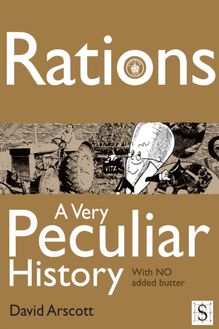-
 Univers
Univers
-
 Ebooks
Ebooks
-
 Livres audio
Livres audio
-
 Presse
Presse
-
 Podcasts
Podcasts
-
 BD
BD
-
 Documents
Documents
-
- Cours
- Révisions
- Ressources pédagogiques
- Sciences de l’éducation
- Manuels scolaires
- Langues
- Travaux de classe
- Annales de BEP
- Etudes supérieures
- Maternelle et primaire
- Fiches de lecture
- Orientation scolaire
- Méthodologie
- Corrigés de devoir
- Annales d’examens et concours
- Annales du bac
- Annales du brevet
- Rapports de stage
La lecture à portée de main
Vous pourrez modifier la taille du texte de cet ouvrage
Découvre YouScribe en t'inscrivant gratuitement
Je m'inscrisDécouvre YouScribe en t'inscrivant gratuitement
Je m'inscrisEn savoir plus
Vous pourrez modifier la taille du texte de cet ouvrage
En savoir plus

Description
Sujets
Informations
| Publié par | Andrews UK |
| Date de parution | 15 février 2012 |
| Nombre de lectures | 0 |
| EAN13 | 9781908759047 |
| Langue | English |
Informations légales : prix de location à la page 0,0300€. Cette information est donnée uniquement à titre indicatif conformément à la législation en vigueur.
Extrait
Title Page
GLOBAL WARMING, A VERY PECULIAR HISTORY
With NO added CO2
Written by
Ian Graham
Created and designed by David Salariya
Publisher Information
First published in Great Britain in MMXII by Book House, an imprint of
The Salariya Book Company Ltd
25 Marlborough Place, Brighton BN1 1UB
www.salariya.com
www.book-house.co.uk
Digital edition converted and distributed in 2012 by
Andrews UK Limited
www.andrewsuk.com
Editor: Jamie Pitman
Assistant editor: Jodie Leyman
© The Salariya Book Company Ltd MMXII
All rights reserved. No part of this publication may be reproduced, stored in or introduced into a retrieval system or transmitted in any form, or by any means (electronic, mechanical, photocopying, recording or otherwise) without the written permission of the publisher. Any person who does any unauthorised act in relation to this publication may be liable to criminal prosecution and civil claims for damages.
Every effort has been made to trace copyright holders. The Salariya Book Company apologises for any omissions and would be pleased, in such cases, to add an acknowledgement in future editions.
Visit our website at
www.book-house.co.uk
or go to
www.salariya.com
for free electronic versions of:
You Wouldn’t Want to be an Egyptian Mummy!
You Wouldn’t Want to be a Roman Gladiator!
You Wouldnt Want to Join Shackleton’s Polar Expedition!
You Wouldn’t Want to Sail on a 19th-Century Whaling Ship!
Dedication
To my daughter, Alex
IG
Quotes
“Sea level is rising much faster and Arctic sea ice cover shrinking more rapidly than we previously expected. Unfortunately, the data now show us that we have underestimated the climate crisis in the past.”
Professor Stefan Rahmstorf, Potsdam Institute for Climate Impact Research
“Developed countries have created the problem and have a responsibility to help solve it.”
Ed Milliband, former Environment Secretary of the UK
“So today we dumped another 70 million tons of global-warming pollution into the thin shell of atmosphere surrounding our planet, as if it were an open sewer. And tomorrow we will dump a slightly larger amount, with the cumulative concentrations now trapping more and more heat from the sun.”
Al Gore, former US Vice President and environmental campaigner
Introduction
Weather and climate are not the same. Weather is what’s happening in the atmosphere in one place today and over the next few days. Climate is the average weather in one place over many years. Global climate is averaged over decades, centuries or even millennia.
It’s sometimes put this way – climate is what you expect, weather is what you get.
Weather
Weather is caused by variations in temperature and moisture in different places. The Sun heats the Earth’s surface, which warms the atmosphere just above it. The tropics, near the equator, are heated more than the poles, because the Sun shines more directly on the tropics than the poles. Land is heated more than ocean. Water absorbs more heat than ice. These differences in heating from place to place produce wind, cloud, rain, snow and storms – weather.
Climate
The global climate is affected by complex interactions between solar energy, the land, the sea, the atmosphere, cloud cover, ice, vegetation and, most climate scientists believe, human activities.
Earth cycles
As the Earth moves around the Sun, its tilt and its orbit changes the amount of solar energy reaching different parts of its surface. The most obvious result of this is the seasons. When one hemisphere tilts towards the Sun, it’s summer there and winter in the opposite hemisphere.
The climate is affected by three natural changes called the Milankovitch cycles. They were named after a Serbian scientist and engineer, Milutin Milankovitch (1879–1958), who studied the effects of changes in the Earth’s orbit on climate.
The Milankovitch cycles are:
1. The rotation cycle
The Earth spins like a toy spinning top, but it wobbles slightly on its axis. The wobbling is called precession. Like the other two Milankovitch cycles, the wobble changes the amount of warmth received from the Sun by the Earth, with a cycle time of 20,000 years.
2. The tilt cycle
The Earth tilts, giving us our seasons, but the tilt changes. A greater tilt makes summers warmer and winters colder. A smaller tilt lessens the extremes of temperature. This cycle lasts 40,000 years.
3. The orbital cycle
The Earth’s orbit around the Sun expands and contracts. Sometimes the orbit is more circular and sometimes it’s more flattened and elliptical. The elliptical or circular shape of the orbit is called its eccentricity. This cycle lasts 100,000 years.
Global warming
The Earth’s atmosphere is a mixture of gases, mainly nitrogen and oxygen. The composition is:
Nitrogen: 78%
Oxygen: 21%
Other gases: 1%
The other gases include argon, water vapour, carbon dioxide, ozone and methane.
Water vapour, carbon dioxide, methane and ozone absorb solar energy. They trap heat from the Sun. This is called the greenhouse effect and the gases that produce it are called greenhouse gases. Greenhouse gases absorb enough energy from the Sun to warm the Earth. The warming is also called global warming.
Without any greenhouse gases, the Earth would be so cold that life would be impossible. Greenhouse gases make up only 0.5% of the whole atmosphere, yet they heat the Earth to more than 30ºC (48ºF) warmer than it would be without them. The average temperature of the Earth is about 15ºC (59ºF). Without greenhouse gases, Earth’s temperature would be -18ºC (-0.4ºF) and it would be lifeless. So, we owe our existence in part to global warming caused by greenhouse gases.
Carbon dioxide (CO2)
Carbon dioxide represents just 0.038% of the atmosphere. It is produced in nature by respiration in plants and animals, and by erupting volcanoes. It is also produced when fossil fuels (coal, oil and natural gas) and vegetation are burned.
Water vapour (H2O)
Water vapour is the dominant greenhouse gas on Earth. It absorbs four times more energy from sunlight than carbon dioxide. As the atmosphere warms, more water evaporates from the oceans, increasing the amount of water vapour in the atmosphere and amplifying its greenhouse effect.
Methane (CH4)
Methane was discovered in the 1770s by Alessandro Volta, the Italian scientist who invented the electric battery. It accounts for only 0.00017% of the atmosphere, but it is 20 times more powerful than carbon dioxide as a greenhouse gas. Today, there is roughly twice as much methane in the atmosphere as there was before the industrial revolution. It comes from volcanoes, bacteria in the ground, rubbish dumps and farm animals. It stays in the atmosphere for about 10 years before it combines with oxygen and forms carbon dioxide and water.
Ozone (O3)
Ozone is a form of oxygen, but with three atoms per molecule instead of the usual two. It was discovered by Christian Friedrich Schönbein in 1840. Ozone in the upper atmosphere forms a life-saving layer that protects us from harmful solar radiation.
In the 1980s, scientists discovered that the ozone layer was being damaged by chemicals called chlorofluorocarbons (CFCs), which were used in fridges, air conditioners and aerosol sprays. The ozone layer was thinning, especially over the Earth’s poles. The thinning was so serious that CFCs were outlawed. The ozone layer should repair itself within the next 50 years. Ozone is a greenhouse gas, but it absorbs only about a quarter of the solar energy absorbed by carbon dioxide.
A warmer Earth
Today, most climate scientists think the world is getting warmer, but not because of its tilt, spin or orbit, and not because of natural greenhouse gases either. They think it is warming up because people are adding a lot more greenhouse gases to the atmosphere.
Do you produce greenhouse gases?
Anything you do that involves burning fuel produces carbon dioxide. Since most countries generate most of their electricity in power stations that burn coal or natural gas, activities that use electricity also produce carbon dioxide. Rubbish rotting in landfill sites gives out another greenhouse gas – methane.
So, if you …
Watch television
Turn on lights
Use a computer
Use central heating
Use air conditioning
Microwave a meal
Boil a kettle
Play a video game
Use a washing machine
Use a dishwasher
Vacuum the carpet
Put out rubbish
… you are probably responsible for producing greenhouse gases.
Fact Box
Humans add about 30 billion tonnes of carbon dioxide to the atmosphere every year, or about 4.4 tonnes of carbon dioxide for every man, woman and child on Earth. By 2030, it could be as high as 47 gigatonnes a year.
One kilogram of carbon dioxide would fill a large family fridge, and 1 tonne of carbon dioxide would fill a family home.
Fossil fuels
Coal, oil and natural gas are called fossil fuels, because they formed from the remains of plants and animals that lived millions of years ago.
Coal
Coal formed on land from plants that grew and died in swampy, waterlogged ground up to about 300 million years ago. First, the dead vegetation formed peat. Then the peat became buried by thick, heavy layers of mud and sediment. It sank deeper and deeper, pushed down by the weight of the layers above. The heat and pressure changed the peat into lignite (brown coal) and then black coal,
-
 Univers
Univers
-
 Ebooks
Ebooks
-
 Livres audio
Livres audio
-
 Presse
Presse
-
 Podcasts
Podcasts
-
 BD
BD
-
 Documents
Documents
-
Jeunesse
-
Littérature
-
Ressources professionnelles
-
Santé et bien-être
-
Savoirs
-
Education
-
Loisirs et hobbies
-
Art, musique et cinéma
-
Actualité et débat de société
-
Jeunesse
-
Littérature
-
Ressources professionnelles
-
Santé et bien-être
-
Savoirs
-
Education
-
Loisirs et hobbies
-
Art, musique et cinéma
-
Actualité et débat de société
-
Actualités
-
Lifestyle
-
Presse jeunesse
-
Presse professionnelle
-
Pratique
-
Presse sportive
-
Presse internationale
-
Culture & Médias
-
Action et Aventures
-
Science-fiction et Fantasy
-
Société
-
Jeunesse
-
Littérature
-
Ressources professionnelles
-
Santé et bien-être
-
Savoirs
-
Education
-
Loisirs et hobbies
-
Art, musique et cinéma
-
Actualité et débat de société
- Cours
- Révisions
- Ressources pédagogiques
- Sciences de l’éducation
- Manuels scolaires
- Langues
- Travaux de classe
- Annales de BEP
- Etudes supérieures
- Maternelle et primaire
- Fiches de lecture
- Orientation scolaire
- Méthodologie
- Corrigés de devoir
- Annales d’examens et concours
- Annales du bac
- Annales du brevet
- Rapports de stage




















